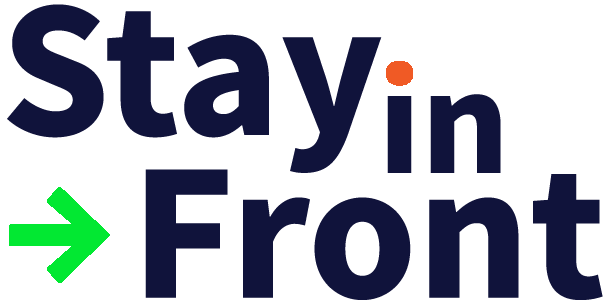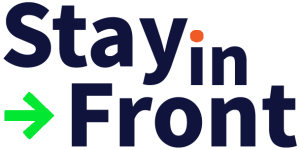
Alex Alexandrou
Chief Information Officer
LIXIL
Over the years, Alex has worked with businesses of various sizes, from small and medium-sized enterprises to large corporations and across different ownership structures, including private equity firms such as Bain Capital, Goldman Sachs, and JW Childs Associates, as well as privately owned and large publicly traded global organizations like Newell Brands and LIXIL Group. Alex has successfully led organizations through major digital and business transformations and cloud initiatives, modernizing their market approaches and securing competitive advantages over industry rivals.
Alex specializes in developing and implementing digital strategies that closely align with business objectives. His expertise includes consolidating platforms, applications, and network infrastructures into unified enterprise solutions. This leads to significant and consistent reductions in operational costs while boosting productivity and enabling IT organizations to become an integral part of business growth.
Additionally, Alex is a veteran in private equity mergers and acquisitions, having successfully assisted in executing over $2 billion in business transactions.



From this understanding, we drafted a strategy that included the creation of the five pillars of IT. In addition to Business Systems and Network Infrastructure, we introduced three new areas of focus:
1) Digital and Consumer Engagement: This initiative was based on a business strategy to better understand our consumers and transition from a predominantly B2B model to a more balanced B2B and B2C approach.
2) IT Supply Chain and Manufacturing: This pillar was created based on business priorities, focusing on streamlining the supply chain, reducing costs, and improving productivity in manufacturing through Industry 4.0 and predictive AI solutions.
3) Change Management and Governance: As a publicly traded organization, we formulated this pillar within IT to better govern software development and platform changes, ensuring higher levels of compliance.
This strategic framework allowed us to align IT initiatives with the business’s overall goals, enhancing efficiency and supporting growth.
VISION
Empower High Growth Rate
-Provide Platform
-Technology & Services
-Enable Marketing & Sales Initiatives and Synergies
-Drive Consumer, Brand and Product Awareness
Build on Shared Services
-Contributing vs. Supporting
-Implementing vs. Addressing
Grow Strategic Partnerships
-Internal – Business Functions
-External – Vendors & Business Partners
SUCCESS
A successful Information Technology department exhibits several key characteristics and attributes that align with the overall goals of the business. It provides proactive technology and innovation, enabling operational efficiency, demonstrating high agility and flexibility, and maintaining a user-centric approach. Additionally, it prioritizes scalability and future-readiness, serves as a business enablement organization, and, most importantly, is an integral part of the business and its future growth.
DELIVERABLES
Deliverables are evaluated based on various variables and dimensions, including:
- Were they delivered on time and within budget?
- Did they meet the business requirements?
- Have they contributed to streamlining business processes?
- Have they improved productivity?
- Were they adopted and utilized extensively by the business?
- Did they provide a return on investment (ROI) in terms of effort and cost?
These examples illustrate how success can be assessed in business platforms, systems, or IT-related services.









Clear Objectives: Define and document the project objectives and scope to ensure everyone involved, especially from the business, understands what needs to be achieved and prevent scope creep.
Robust Communication: Maintain open and transparent communication across all levels of the initiative. Regular updates, status reports, and meetings help keep stakeholders informed and aligned. Most importantly, this fosters trust.
Governance: Establish a governance structure and committee with clear roles, responsibilities, and decision-making processes. Equally important is the assignment of project sponsors, stakeholders, and project managers.
Risk Management: Ensure the project governance process includes the ability to identify, assess, mitigate, and monitor risks throughout the project lifecycle. This involves identifying risk areas before they occur, having a contingency plan in place, and promptly addressing any issues that arise.
Adaptability and Flexibility: Projects should be adaptable to changes in business priorities, market conditions, or stakeholder requirements. Flexibility enables agile responses to emerging risks, challenges and/or opportunities.
Other important elements would be resource management, monitoring and control, documentation, quality assurance, and, finally, post-project evaluation or project closure.



Generative AI: Generative AI refers to systems that are designed to create new content, such as text, images, or audio, that is similar to what a human might produce under similar circumstances and information.
Predictive AI: Predictive AI, on the other hand, focuses on making predictions or forecasts based on historical data. This is usually a large amount of accurate information that systems use to analyze patterns in the data to make educated guesses about future outcomes. Predictive AI is commonly used in applications like financial forecasting, manufacturing sales forecasting, and many more. It can also be used for personalized recommendations in e-commerce or content platforms.



Furthermore, operational efficiency through lean manufacturing or process streamlining and optimization can be adapted to FMCG’s focus on reducing waste, improving speed to market, and ensuring product availability.
Finally, distribution and retail relationships, along with a customer-centric approach, are essential. In FMCG, the emphasis is on delivering products that meet immediate consumer needs and preferences, requiring agility in product development and responsiveness to market feedback.



Thank you Alex for taking the time to share your thoughts with us today.


Thomas Buckley
Chief Executive Officer
StayinFront
RECENT INTERVIEWS


Subscribe To News & Updates
Quick Contact








